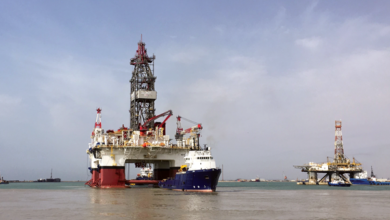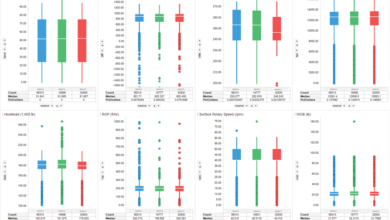Critical issues in drilling & completions
Efficiency gains and safety remain key issues for industry leaders, but data and an evolution in roles and responsibilities come to the fore
By Linda Hsieh, Managing Editor
 The drilling industry has come to a turning point in the way it thinks about this business. Perhaps it was driven by the drastic fall in oil prices during this downturn and expectations for continued volatility in the years ahead. Or perhaps it was driven by the realization that the industry has lost – likely permanently – much of the talent and experience that it had spent so much resources to develop over the past decade. Whatever the motivation, transformation is under way, and perhaps at a faster pace than people would have predicted.
The drilling industry has come to a turning point in the way it thinks about this business. Perhaps it was driven by the drastic fall in oil prices during this downturn and expectations for continued volatility in the years ahead. Or perhaps it was driven by the realization that the industry has lost – likely permanently – much of the talent and experience that it had spent so much resources to develop over the past decade. Whatever the motivation, transformation is under way, and perhaps at a faster pace than people would have predicted.
First, data and data analytics are now center-stage in the drilling operation. Drilling used to be perceived as an art. Picture an experienced driller touching or smelling drilling fluid to get a feel for its health, or the way they sense the amount of friction when they make a connection. Can a well-instrumented drilling rig and the effective use of data analytics do the same thing? A few years ago, most in the drilling industry would likely have said no. Now, people’s perception of and attitude toward technology are rapidly changing.
“People like to believe that what they know is special and can’t be reproduced, but I can tell you that a lot of what drillers think is intuition can be measured, predicted and controlled through technology,” said Randy Mutch, VP of Wellsite Technology for Ensign Energy Services. The company’s Edge Analytics project is now leveraging the power of data and analytics to better inform all aspects of its drilling processes and even to predict equipment failures.
In deepwater operations, data-driven solutions are also being used to drive repeatability and, therefore, cost reductions. “Everything doesn’t have to be serial number 1 in deepwater,” said Kim McHugh, General Manager of Drilling and Completions at Chevron. “Our deepwater group is starting to look at how we can do some things with more repeatability so we can have more predictability and standardization.”
Second, roles and responsibilities are rapidly being redefined during this downturn – in ways that the industry hasn’t seen in decades. Take Nabors, for example, which is embracing the idea that it is no longer a drilling contractor. “In other words, our product is not the rig. The product is delivering the wellbore,” said Christopher Papouras, President of Nabors Drilling Solutions. The company recently introduced a modular rig control system that will be used not only to automate basic drilling contractor operations but also to execute services that are typically performed by third parties at the rig site, such as directional drilling and MPD.
Parker Drilling is also increasingly taking on roles and responsibilities beyond those of a traditional drilling contractor. However, “we think part of the solution is for the customer to own the drilling rig themselves,” said Gary Rich, President, Chairman and CEO. This model, he said, allows drilling contractors to focus on everyday operational execution and removes barriers that exist today in making true performance step-changes.
Another emerging model is Schlumberger’s Rig of the Future, where what used to be a service company is now building rigs that will connect and optimize both the surface and subsurface systems. In their concept, a rig is no longer a rig. “We prefer to look at it as an integrated well construction platform,” said Justin Rounce, Senior VP of Marketing and Technology.
The journey is just starting, but looks like it’s time to reevaluate our ideas of what a drilling contractor is and what drilling rigs are. DC




